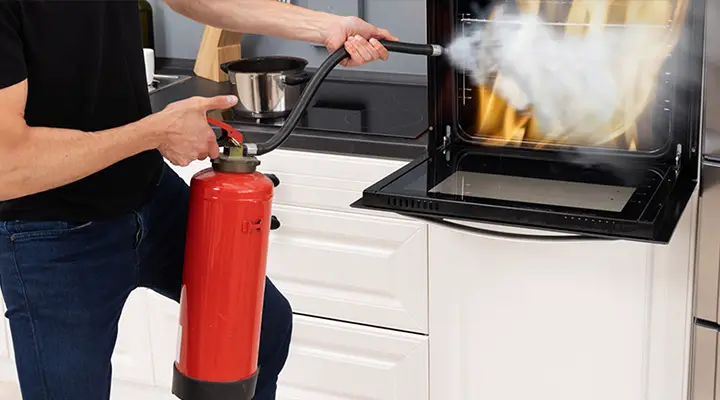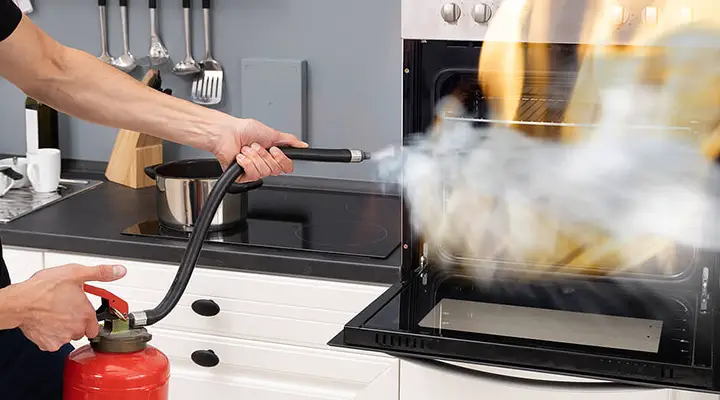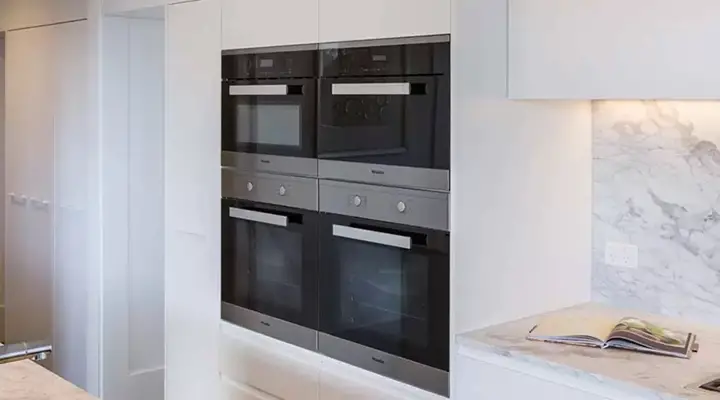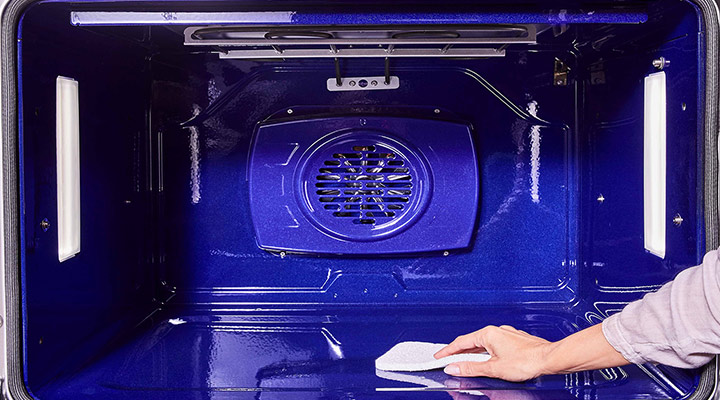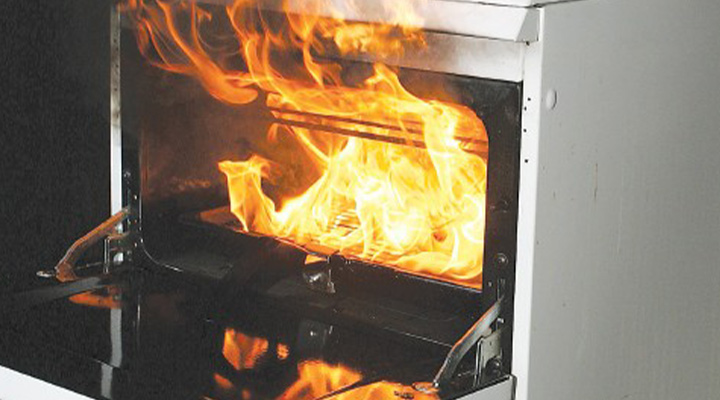Can We Use Steel Utensils in Oven | Are They Oven-friendly?
Yes, you can use steel utensils in the oven. Steel is a tough enough material to be considered an all-rounder for oven use. In fact, any oven-safe utensils or pans are suitable for use in the oven, and steel is one of them.
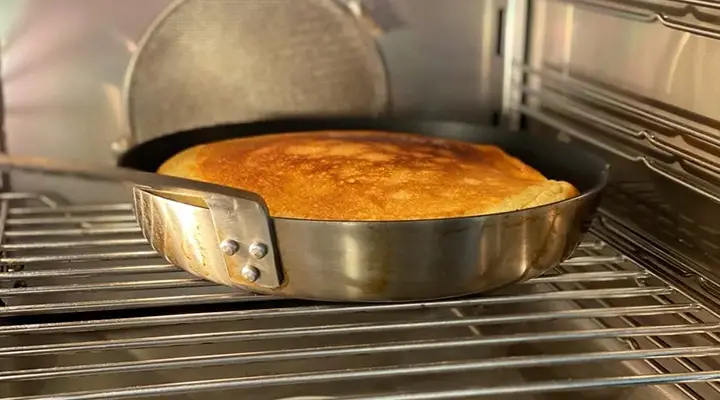
Metals like steel, aluminum, and cast iron are examples of oven-safe materials. Always make sure to avoid using utensils that have non-metallic parts, such as plastic or wooden handles.
Can We Use Steel Utensils in Oven | Is it Safe?
Cast iron and stainless steel utensils are two types of metal that stand out the most among oven-safe materials. Cast iron is a solid material that is intended for baking. Cast iron pans, pots, and containers are unlikely to be damaged when placed in an OTG/oven. On the other hand, steels are strong as nails and can easily withstand the heat of an oven.
Our kitchen is mostly filled with steel kitchenware. This is because steel offers far too many health benefits, and we are often advised to avoid eating with plastic utensils.
Can Stainless Steel Go in Oven?
Stainless steel is always mentioned when we talk about the use of steel in the kitchen. Stainless steel is suitable for OTG ovens as well as other ovens. Stainless steel is one of the most widely used, healthy, and safe cookware materials of all time, whether it’s for grilling or baking in ovens or general cooking.
Chromium and nickel are used to make stainless steel. Though the most popular stainless steel has an 18/10 ratio of chromium and nickel, other varieties of stainless steel are equally suitable for oven use and cooking. It provides a gleaming, appealing appearance and is long-lasting enough for daily usage. And it’s rustproof.
Also, any type of stainless steel has a minimum melting point of 1400°C, so don’t be scared to use it in OTG or microwave ovens. It never reacts with any ingredient of the food. As a result, the flavor or color of the dish you’re cooking in your oven will never change. For oven-safe use, a stainless steel skillet is the best all-around choice.

Drawbacks of Using Stainless Steel Utensils in Oven
Stainless steel appears to be ideal for use in OTG, whether it’s for durability, attractive appearance, ease of maintenance, or cost-effectiveness, but it, like other cookware materials, has some drawbacks.
One of the most common issues when using stainless steel utensils in an oven is their low heat conductivity. This is why using a stainless steel pan to bake or cook quickly in an oven has become a bit difficult. However, several approaches have been made to fix this drawback. For example, layers of stainless steel are bonded with high conductivity metals like aluminum and copper, to create an ideal stainless steel utensil for oven use.
Moreover, the “impact-bonding” method has made steel utensils more cooking-friendly.
Can We Use Steel Plate in Oven for Pizza?

Yes, we can use a steel plate for pizza in the oven. A steel plate is more ideal than a pizza stone because metal stores and conducts heat better than stone, both of which are important properties in cooking light and crisp pizza.
A steel plate will stabilize at roughly 450 °F in a 500 °F oven. It emits steady heat while absorbing it. So, it stabilizes at a slightly cooler temperature than the air around it, lowering the risk of burning your crust. This implies that when you set a pizza on the steel, rather than the hot air in the oven, the dough is baked by the transmission of heat held in the steel. This results in a crispier crust as well as shorter cooking times.
Which Utensils We Can Use in Oven?
OTG can use very few oven-safe materials. Two requirements must be met while selecting any utensils for use in OTG.
• As the temperature rises, the material should not react with the food.
• Its melting point should be higher.
However, the following materials are oven-safe and can be used in OTG:
- Stainless steel utensils
- Aluminum mold/tin
- Silicone baking mats
- Glass container
- Enameled cast iron or ceramic
- Stoneware
You should avoid items having non-metal parts, such as plastic or wooden handles. Some plastics can tolerate heat, but identifying them can be challenging. Before putting plastics in the oven, check with the manufacturer. Wood will most likely warp.
Avoid ceramic plates with adhesive designs, and if the ceramics are glazed, be sure they were made to be used in a built-in oven. You must not expose oven-safe glasses to temperature shocks by placing them directly in a very hot oven or immediately putting it from the hot oven to cold water. Silicone is ideal for baking and is unbreakable unless you cut it.
Frequently Asked Questions
Can I Use Steel Utensils in the Microwave?
It is not recommended to use steel utensils in the microwave. It’s because microwaves fail to penetrate through them, although they generate an electric current in the utensil, which has little effect unless the metal has jagged edges or spikes. But if you are to use them, make sure the bowl has more open surfaces as it’s the only way for microwaves to enter the bowl. You can use steel utensils for light boiling or heating purposes.
How to know if A Pan is Oven Safe?
You can know if your pan is oven safe by looking at the bottom of it. There should be an oven-safe symbol beneath the pan. Some oven-proof pans can withstand temperatures of up to 500°F or even higher, while others can tolerate temperatures of up to 350°F only in the oven.
Conclusion
Steel utensils are one of the most versatile types of utensils in your kitchen when it comes to cooking. Steel cookware is sturdy, convenient, and easy to use for the oven. It’s easy to clean, hard to damage, and doesn’t change your food’s flavor. Your steel utensil can securely be put in the oven at temperatures up to 500-600°F if the handle is made of metal.

